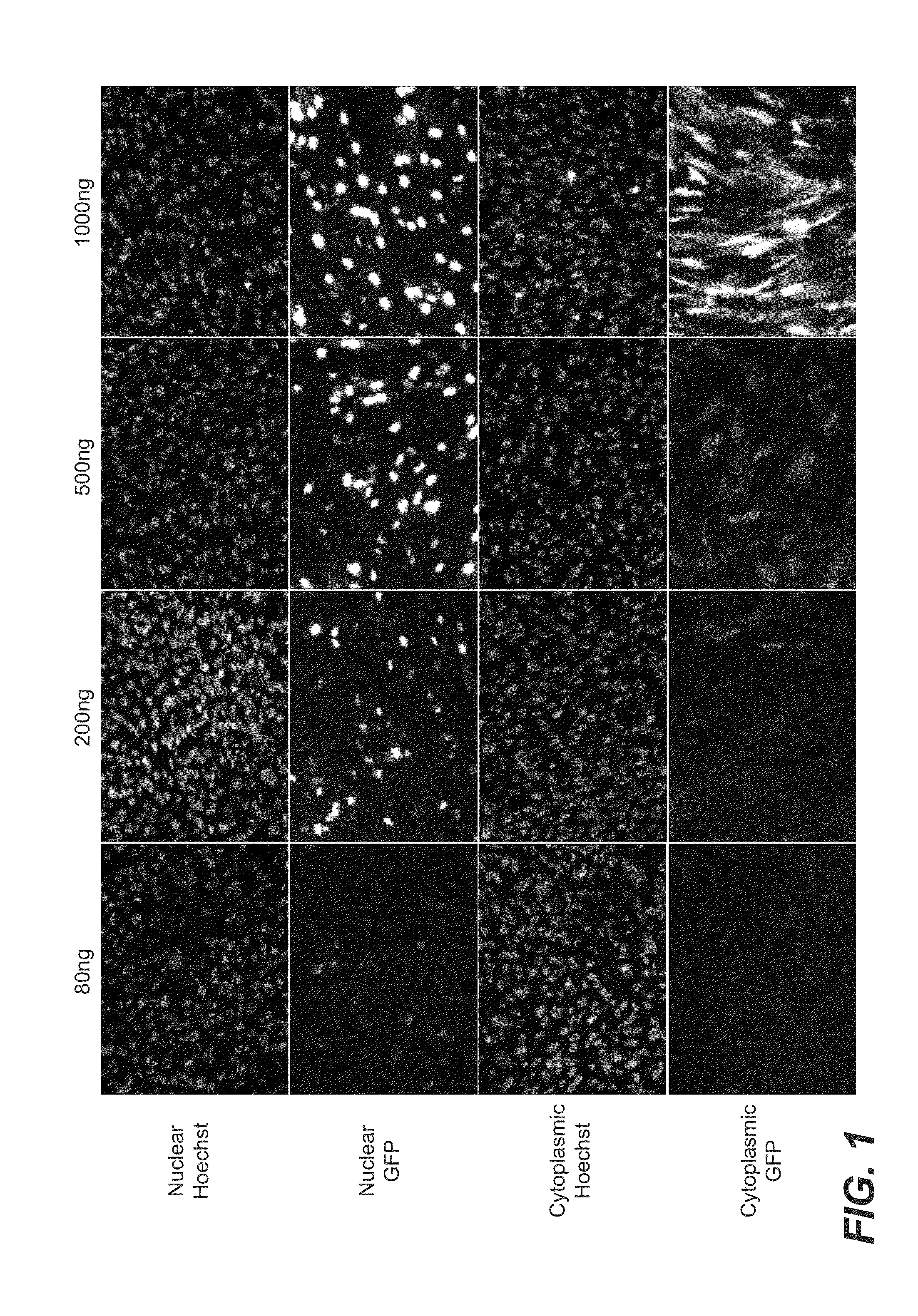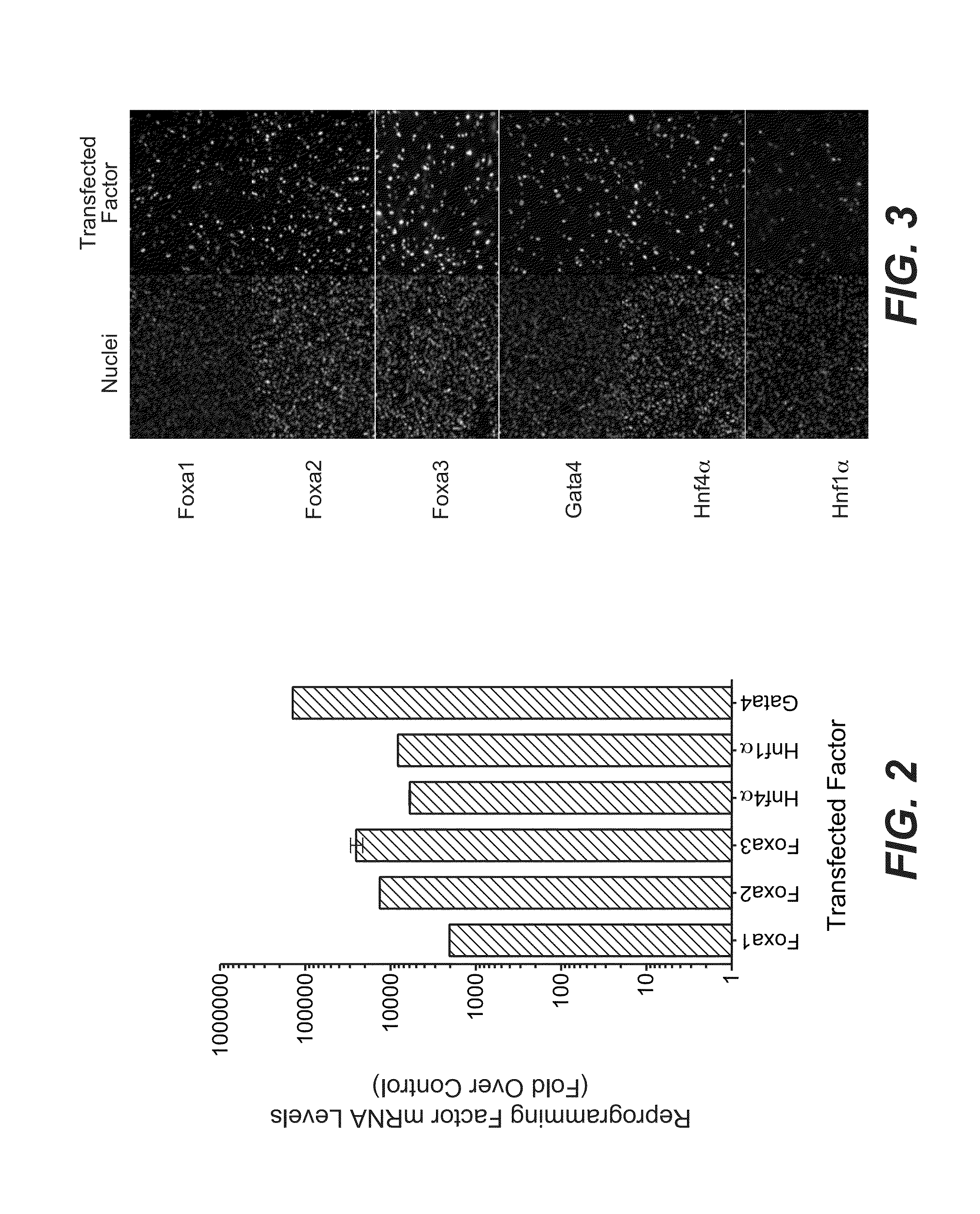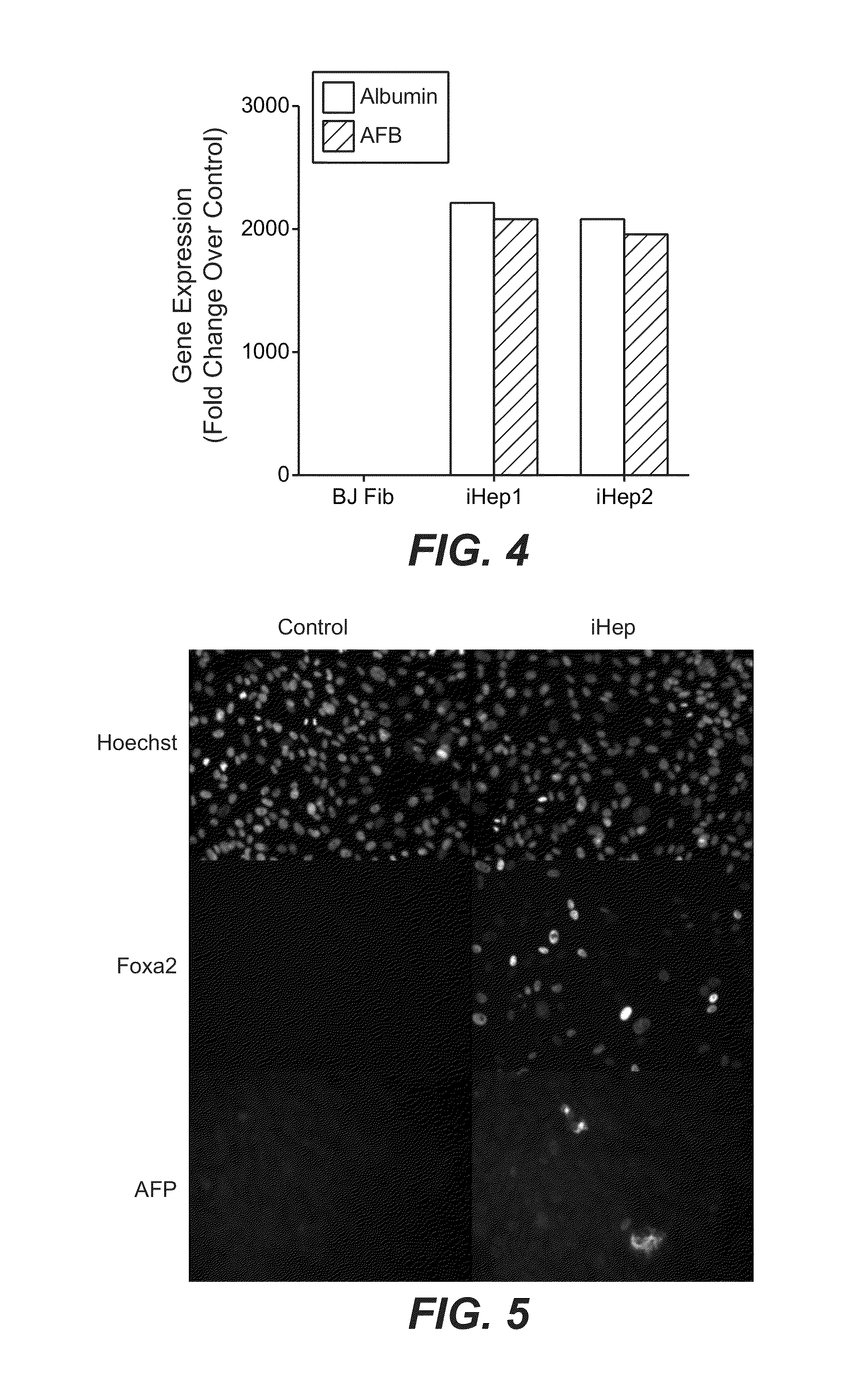Methods and compositions for producing induced hepatocytes
a technology of hepatocytes and compositions, applied in the direction of genetically modified cells, instruments, skeletal/connective tissue cells, etc., can solve the problems of affecting the success of human cells, presenting a variety of biological and regulatory obstacles for clinical applications, and affecting the success of the same methodology when applied to human cells
- Summary
- Abstract
- Description
- Claims
- Application Information
AI Technical Summary
Benefits of technology
Problems solved by technology
Method used
Image
Examples
example 1
Protein Expression Correlates with Dose of Transfected of mRNA
[0188]Initial experiments were performed to examine the effect of various doses of transfected mRNA on respective protein expression and localization following transfection into human fibroblasts. Various amounts of IVT mRNA encoding green fluorescent protein (GFP) or nuclear localization-GFP (NLS-GFP) (approximately 80 ng, 200 ng, 500 ng, and 1,000 ng, prepared as described above) were transfected into BJ fibroblasts grown in 24-well tissue culture plates, as described above. Cells were transfected one time with the indicated amounts of RNA and cultured for an additional 24 hours. The expression of GFP was determined using methods described above.
[0189]As shown in FIG. 1, expression of GFP in human fibroblasts transfected with mRNA encoding GFP (labeled as Cytoplasmic GFP in FIG. 1) or GFP containing a nuclear localization sequence (NLS-GFP, labeled as Nuclear GFP in FIG. 1) showed a dose-response of protein expression t...
example 2
Transcription factor Expression Following Daily Transfection of Fibroblasts with Six Transcription Factor mRNA Mixture
[0190]To examine the extent to which transcription factor expression is maintained following mRNA transfection into human fibroblasts, the following studies were performed. An mRNA mixture was prepared by pooling 6 transcription factor (6TF) mRNAs (encoding FOXA1, FOXA2, FOXA3, HNF4A, HNF1A, and GATA4) transcribed in vitro as described above, at a molar ratio of 1:1:1:1:1:1. This 6TF mRNA mixture was transfected (containing approximately 1,200 ng total mRNA / transfection / 6-well culture plate) once daily into BJ fibroblasts cultured in 6-well culture plates for 9 days, as described above. (See Table 4 below, listing the amounts of each mRNA within the 6TF mRNA mixture.) After 9 days, the expression of each transcription factor was measured by qPCR and compared to the expression of each transcription factor in non-transfected BJ fibroblasts (e.g., lipid-only control tra...
example 3
Transcription Factors Localize to the Nucleus in Human Fibroblasts Transfected with Six Transcription Factor mRNA Mixture
[0192]In order to examine the cellular localization of the transcription factors within cells transfected with 6TF mRNA mixture, the following studies were performed. BJ fibroblasts were transfected once with 6TF mRNA mixture as described above. After 24 hours, the cellular localization and qualitative protein expression of each transcription factor was determined by immunostaining, using methods described above. FIG. 3 shows immunostaining of GATA4, HNF1A, HNF4A, FOXA3, FOXA2, and FOXA1 following transfection of 6TF mRNA mixture into BJ fibroblasts. As shown in FIG. 3, GATA4, HNF1A, HNF4A, FOXA3, FOXA2, and FOXA1 protein expression was detected and localized to the nuclei of transfected cells. Similar localization results were obtained in cells transfected once-daily for 5 days. These results indicated that the transcription factors were expressed and correctly l...
PUM
 Login to View More
Login to View More Abstract
Description
Claims
Application Information
 Login to View More
Login to View More - R&D
- Intellectual Property
- Life Sciences
- Materials
- Tech Scout
- Unparalleled Data Quality
- Higher Quality Content
- 60% Fewer Hallucinations
Browse by: Latest US Patents, China's latest patents, Technical Efficacy Thesaurus, Application Domain, Technology Topic, Popular Technical Reports.
© 2025 PatSnap. All rights reserved.Legal|Privacy policy|Modern Slavery Act Transparency Statement|Sitemap|About US| Contact US: help@patsnap.com



